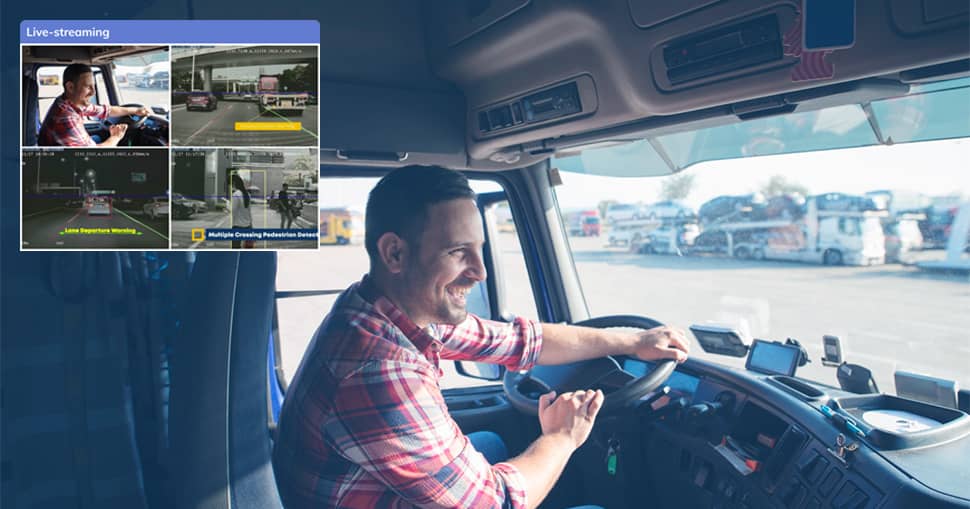Introduction: Why Vehicle Monitoring Systems Matter
Vehicles today are no longer mere transportation tools—they have evolved into mobile data centers, management platforms, and security guardians. Smart vehicle monitoring systems (VMS) transform vehicles from simple machines into intelligent, connected endpoints. By integrating IoT SIM cards, these systems enable real-time data connectivity, optimize fleet management, enhance safety, and deliver actionable insights for businesses and individuals alike.
In this article, we will explore:
- The practical applications of vehicle monitoring systems
- How these systems evolved over the years
- The specific functions they provide
- The critical role of IoT SIM cards
- A real-world client case study
- How Zhongyi IoT provides complete solutions
This guide is designed to help fleet managers, logistics companies, and tech enthusiasts understand why IoT-enabled smart monitoring systems are essential for modern vehicles.
1. What Are the Benefits of Vehicle Monitoring Systems?
1.1 Real-Time Location Tracking
The most basic and immediately visible function of a VMS is real-time location tracking. Whether for logistics fleets, taxis, or private vehicles, VMS allows fleet managers or vehicle owners to know the exact location of their vehicles at any given moment.
Benefits for businesses:
- Optimize vehicle dispatch and reduce delivery delays
- Improve route efficiency, reducing fuel consumption and costs
- Increase overall operational efficiency
Benefits for individual users:
- Monitor family members or personal vehicles remotely
- Improve safety and peace of mind
1.2 Vehicle Health Monitoring
Vehicles are intricate mechanical systems. Engines, batteries, fuel levels, tire pressure, and temperature are all potential points of failure. A smart VMS continuously monitors these parameters and alerts drivers or fleet managers of any abnormalities.
Think of this as a “health guardian” for your vehicle:
- Prevents minor issues from escalating into costly repairs
- Ensures safer driving experiences
- Reduces unexpected downtime
1.3 Driving Behavior Analysis
Modern VMS can record driver behaviors such as harsh braking, rapid acceleration, sharp turns, and speeding.
Benefits:
- For businesses: Manage driver performance, improve safety, and reduce accidents
- For individuals: Gain insights into personal driving habits, promote safer driving, and reduce fuel consumption
1.4 Safety and Theft Prevention
Vehicles are exposed to risks, including collisions, theft, and unauthorized access. A VMS can instantly detect unusual activities and alert drivers or fleet managers.
Advanced features include:
- Collision detection
- Real-time theft alerts
- Remote vehicle control (locking doors, immobilizing the engine)
This proactive safety mechanism ensures timely interventions rather than reactive responses after an incident occurs.
1.5 Data Collection and Intelligent Analysis
A VMS collects a wealth of data:
- Mileage
- Fuel or battery consumption
- Route choices
- Driving habits
Analyzing this data helps businesses optimize transportation routes, reduce idle miles, predict maintenance needs, and even support urban planning or smart city projects. Vehicles are no longer just “moving”—they can “think” intelligently with data.
1.6 Remote Control and Operational Convenience
Modern vehicle monitoring systems allow remote operation via apps or management platforms. Fleet managers can:
- Start or stop vehicles remotely
- Lock/unlock doors
- Set geofencing or alert zones
This capability significantly improves operational efficiency for logistics, ride-sharing, and personal vehicle management.
2. The Evolution of Vehicle Monitoring Systems
Vehicle monitoring systems didn’t appear overnight—they evolved alongside automotive and information technology.
2.1 Early Era: Manual Monitoring
In the 1980s and 1990s, vehicle monitoring was almost non-existent. Fleet managers relied on drivers to manually report mileage, fuel consumption, and maintenance data. Traffic management depended entirely on human patrols, which was inefficient and prone to errors.
2.2 GPS Revolution
By the late 1990s, GPS technology began transforming vehicle monitoring. Early adopters—primarily logistics companies—installed GPS devices to track vehicle locations. This innovation improved dispatch efficiency and reduced the risks of theft or lost vehicles.
2.3 Mobile Networks Era (2000s)
With the proliferation of 2G and 3G mobile networks, vehicle monitoring systems could collect more complex data, including:
- Vehicle status
- Fuel consumption
- Driver behaviors
Some systems even supported basic remote management. Logistics companies, taxis, and public transportation operators began using these solutions widely.
2.4 Smart and Connected Vehicles (2010s-Present)
The rise of 4G/5G networks and IoT technology ushered in the era of smart, connected vehicles. Modern VMS can:
- Stream high-definition video
- Upload real-time driving data
- Provide remote vehicle control
Integration with cloud platforms, AI, and big data allows companies to optimize routes, lower operational costs, and enable smart transportation solutions.
2.5 Future Trends
With V2X (vehicle-to-everything), AI-assisted driving, and autonomous vehicles, VMS will:
- Connect vehicles with city infrastructure and smart communities
- Offer predictive insights for safety and maintenance
- Enable fully intelligent vehicle operation
3. Core Functions of Vehicle Monitoring Systems
Smart VMS acts like a vehicle’s “eyes and ears,” providing several critical functions:
3.1 Real-Time GPS Tracking
Track vehicle locations continuously, viewable via dashboards or mobile apps. This capability:
- Improves dispatch efficiency
- Reduces delivery delays
- Supports emergency response
3.2 Vehicle Status and Health Monitoring
Record and monitor:
- Speed
- Engine status
- Fuel or battery consumption
- Braking patterns and acceleration
Predictive maintenance features help prevent breakdowns and accidents.
3.3 Video Surveillance and Safety Alerts
Onboard cameras record interior and exterior views. In case of accidents, theft, or abnormal driving behavior, systems:
- Save incident video
- Send immediate alerts to managers or owners
- Support insurance claims and legal investigations
3.4 Remote Management and Data Analysis
Fleet managers can:
- Control vehicle permissions
- Define geofenced areas
- Dispatch vehicles efficiently
- Generate reports for operational insights
3.5 Smart Connectivity via IoT SIM Cards
IoT SIM cards provide persistent connectivity for real-time vehicle monitoring and remote management, independent of Wi-Fi or physical network limitations.
4. The Critical Role of IoT SIM Cards in Vehicle Monitoring
IoT SIM cards are the bridge between vehicles and cloud platforms. They enable several key benefits:
4.1 Real-Time Data Transmission
Vehicles generate massive data streams daily—from GPS location to driving behavior and video footage. IoT SIM cards ensure continuous upload to the cloud, making real-time monitoring possible.
4.2 Enhanced Safety
IoT SIM-enabled VMS allows instant alerts for:
- Collisions
- Abrupt braking
- Route deviations
Managers can respond in seconds, reducing risks and improving driver safety.
4.3 Remote Fleet Management
Regardless of whether vehicles are on highways, in cities, or rural areas, IoT SIM cards allow full remote control and monitoring.
4.4 Secure and Reliable Data Transmission
With dedicated channels and encryption, IoT SIM cards guarantee data integrity. This is critical for fleet management, insurance claims, and liability assessment.
4.5 Big Data and Smart Analytics
IoT SIM-enabled VMS data supports:
- Route optimization
- Fuel efficiency improvement
- Predictive maintenance
- Smart city integration
IoT SIM cards turn vehicle monitoring systems from passive observers into intelligent data processors.
5. Client Case Study: US Logistics Company
Background:
- 500 employees
- Hundreds of delivery vehicles
- Needed enhanced fleet visibility and operational safety
Challenges:
- Full-route visibility across cities and remote areas
- Rapid safety alerts for drivers and cargo
- Efficient fleet dispatch and management
Solutions Provided by Zhongyi IoT:
- IoT SIM cards for uninterrupted connectivity (2G/4G/5G/NB-IoT)
- Smart vehicle monitoring devices with GPS and HD cameras
- Cloud management platform for real-time monitoring and remote control
- Safety alerts and remote vehicle lock capabilities
Results:
- Optimized dispatch and route planning
- Enhanced driver and cargo safety
- Data-driven operational decisions
- Reduced labor costs and human resource dependency
Client Feedback:
The integration of IoT SIM cards and smart vehicle monitoring transformed their fleet into a safer, more efficient, and intelligent operation.
6. Zhongyi IoT’s Smart Vehicle Monitoring Solutions
Zhongyi IoT provides a complete, intelligent, and scalable solution for smart vehicle monitoring systems, covering the full process from hardware deployment to cloud-based management.
IoT SIM Cards for Reliable Real-Time Connectivity
Each vehicle is equipped with Zhongyi IoT’s IoT SIM card, supporting multiple network standards, including 2G, 4G, 5G, and NB-IoT. Regardless of whether vehicles operate in urban areas, suburbs, or remote locations, they stay connected 24/7. This ensures that real-time vehicle monitoring data, GPS location, and vehicle status are continuously uploaded to the cloud, enabling full-route visibility and effective fleet management.
Smart Vehicle Monitoring Devices
Zhongyi IoT’s system integrates high-definition cameras, GPS modules, and multiple sensors to capture driving behavior, vehicle conditions, and environmental information in real time. The system records and analyzes:
- Driver behavior, including harsh braking, sharp turns, and collisions
- Cargo loading status and vehicle occupancy
- Vehicle operating conditions such as speed, engine status, and battery levels
This comprehensive monitoring ensures accurate, actionable data for both fleet management and vehicle safety.
Cloud-Based Remote Management Platform
Through the cloud platform, fleet managers can:
- Monitor vehicle locations and status in real time
- Perform remote vehicle control and scheduling
- Receive instant alerts for abnormal driving, route deviations, or overspeeding
These capabilities improve response efficiency, enhance safety, and optimize fleet operations.
Big Data Analytics and Intelligent Dispatch
The system consolidates vehicle trajectories, driver behavior, and monitoring data for data-driven decision-making. Insights include:
- Optimizing delivery and transportation routes
- Predicting peak demand periods
- Reducing idle mileage
- Improving overall fleet operational efficiency
By leveraging AI-powered analytics, companies can maximize efficiency while maintaining vehicle safety.
Safety and Security Features
Zhongyi IoT combines IoT SIM connectivity with smart lock control technologies, enabling:
- Remote vehicle locking and unlocking
- Real-time location tracking
- Instant alerts for abnormal activities
These features significantly enhance risk management capabilities for logistics fleets and shared mobility operators.
Over-the-Air (OTA) Updates
The system supports OTA remote updates, allowing vehicle software to be upgraded, optimized, or patched without on-site intervention. This ensures the smart vehicle monitoring system maintains optimal performance at all times.
Strategic Advantages
- Stable and Reliable Connectivity: Multi-network IoT SIM cards ensure uninterrupted, secure data transmission even in challenging environments.
- Intelligent Data Management: AI and big data analysis enable scientific fleet dispatch and predictive risk management.
- Comprehensive Safety: Remote control and real-time alert systems provide full protection for vehicles and cargo.
- Scalable Ecosystem: The system seamlessly integrates with intelligent dispatch, IoT management platforms, and smart city infrastructures, supporting business expansion and upgrades.
Conclusion
Zhongyi IoT’s smart vehicle monitoring solutions address traditional fleet management blind spots and safety concerns. By combining real-time connectivity, intelligent data analytics, and remote fleet management, companies can achieve digitalized operations and enhanced vehicle safety.
Whether in logistics, taxi services, public transportation, or shared mobility, Zhongyi IoT provides a stable, efficient, and intelligent full-process solution for modern fleet management.



